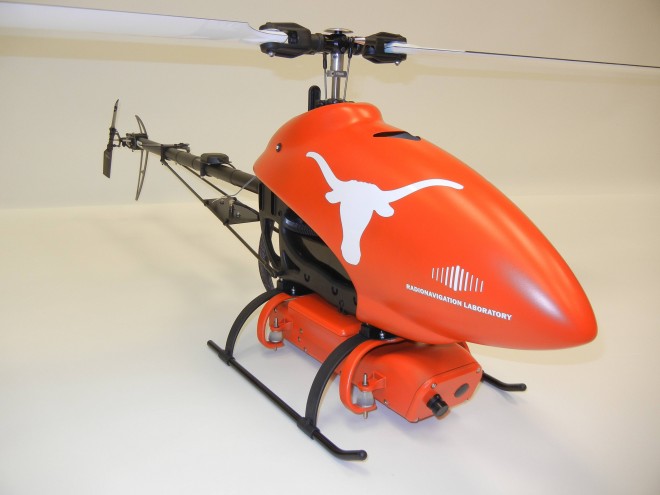The Federal Aviation Administration (FAA) has begun the delayed process of selecting six research and test sites where unmanned aerial systems or UAS will finally be able to spread their wings and, hopefully, launch a new, multi-billion dollar industry.
The Federal Aviation Administration (FAA) has begun the delayed process of selecting six research and test sites where unmanned aerial systems or UAS will finally be able to spread their wings and, hopefully, launch a new, multi-billion dollar industry.
The civil brethren of the remotely piloted surveillance and strike aircraft that made such an impact in Afghanistan, UAS have the potential to help firefighters battle forest fires and farmers increase yields through monitoring and more accurate, low-altitude spraying. UAS can support police looking for fugitives and lost kids, aid rescuers during emergencies like Hurricane Sandy and enable scientists to track environmental changes and endangered animals.
Under orders from Congress to integrate unmanned systems into the National Air Space (NAS) by 2015, the FAA is moving to both update rules originally written for manned aircraft and set up test locations at which companies can safely work with prototypes and hammer out solutions to the technical limitations inherent in unmanned craft. Currently federal, state, and local government entities must obtain an FAA Certificate of Waiver or Authorization (COA) before flying UAS in the NAS.
Last Thursday (February 14, 2013) the agency released a Screening Information Request (SIR), the equivalent of a request for proposals, seeking offers from state and local governments, eligible universities, and other public entities to develop and operate the sites around the country. The sites will be selected, in part, on the basis of diverse locations and climate as well as infrastructure capabilities.
Some 30 states, including Utah, Oklahoma, Hawaii, and Florida, are reportedly interested in establishing a UAS research/test site with at least four states — Indiana/Ohio and Virginia/Maryland — pooling resources in joint bids. Interested parties have 8o days to respond to the SIR.
The states are hoping to gain entry into a market that aerospace market research firm the Teal Group estimates will top $89 billion over the next 10 years with more thanh $49 billion of that activity expected to be in the United States. UAS could create more than 23,000 new U.S jobs, said Rep. Paul Broun, R-Georgia. He cited the figure from the Association for Unmanned Vehicle Systems International (AUVSI) during a February 15 hearing on research into operating UAS in the United States before the House Space Science and Technology Subcommittee on Oversight.
That market has been stalled, however, by a lack of testing capacity and by rules that hamstring UAS operations. Frustration over restrictions against commercial UAS activity and regulatory delays broke out into the open during a presentation by Jim Williams the director of the FAA’s UAS Integration Office at a February 13 conference on unmanned systems.
In an extended exchange, Jeremy Novara of the Virginia firm Vanilla Aircraft questioned Williams on why it was okay for a farmer to operate a small unmanned system, one small enough to qualify as a model airplane, over his own fields but it was not within the rules for Novara to test his company’s unmanned craft over land it owned.
“I said that if a farmer as an individual wants to operate an unmanned aircraft according to the modeling rules, they can do that,” Williams responded, although the FAA rules for flying for compensation were different. The rules needed to change, Williams agreed, but as long as they are in place they have to be enforced.
Novara later told Inside GNSS that the testing situation had not stopped his company’s work — for example, building an aircraft for NASA to use for low-altitude ice elevation mapping over Antarctica. However, the current rules and lack of research and test opportunities was hampering others in the industry, an assertion that the enthusiastic audience support for his comments at the symposium seemed to validate.
Location Privacy
Lack of testing space, he said, is also making it harder to address one of the key concerns the public has — privacy.
“The reason the public is concerned is that they haven’t seen much of these (kind of unmanned craft) on the domestic front,” Novara told Inside GNSS.
The public is generally familiar with the military drones or unmanned aerial vehicles (UAVs) being opeprated by the Department of Defense or CIA in the conflict in Afghanistan, Pakistan, and other areas, he said.
“By making testing harder you are inherently making it more difficult to not only prove out the aircraft,” he said, “but you are also making it more difficult to show the public how these would be used in ways that address their concerns over privacy.”
Privacy concerns have the potential to hamstring the industry.
The FAA became tangled in the issue, said AUVSI chairman Peter Bale, and that was part of the reason the SIR was six months late. Indeed, the FAA will require the six selected test sites to each have a privacy policy integrated into their proposal.
To support that requirement, the FAA put out a separate request for comment in the Federal Register Feb 14 asking the public to review draft privacy language and provide comments. The requirements developed based on the draft and comments will be incorporated into the agreements between the test sites and the FAA.
The draft privacy requirement in included in a request for comments on the Unmanned Aircraft System Test Site Program available on the FAA’s website.
Testing is also necessary, however, because of concerns that unmanned air units could pose a hazard to manned aircraft. Among areas that still need research is “sense and avoid” technology, the sensors and techniques necessary to prevent collisions that a piloted aircraft would be able to avoid. Concerns have also arisen that communications might be lost between a UAV and the craft’s remotely located operator or that something could happen to the GPS signal on which many unmanned systems depend.
“We need to ensure that Unmanned Aerial Systems operate in our National Airspace safely and securely,” said the Oversight Subcommittee’s ranking member, Rep. Dan Maffei, D-NY.
“I certainly understand the desire to safely integrate UAS into the NAS,” Karlin Toner, director of the FAA’s Joint Planning and Development Office told the committee. “Because FAA’s mission is to ensure safety and efficiency, the UAS integration can only occur to the extent that FAA is satisfied that the safety of the NAS [national airspace system] will not be degraded by the introduction of these new aircraft.”






